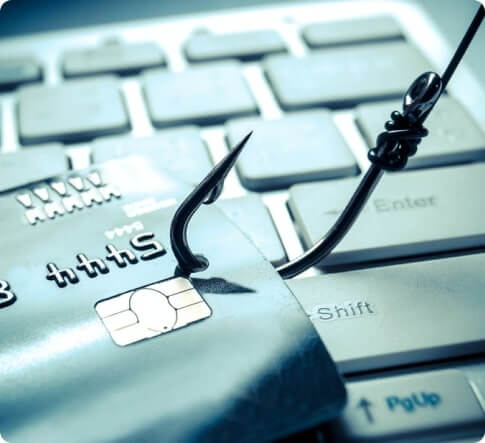
Phishing is one of the most common types of fraud in the UK. Criminals impersonate legitimate organisations to trick individuals into divulging sensitive information such as passwords and banking details. This scam not only results in financial losses but also opens the door for identity theft and malware infections, compromising both your finances and personal data.
Phishing is a type of fraud where fraudsters send unsolicited emails, text messages, or even social media messages that appear to be from trusted sources. Their goal is to lure you into providing personal details that can then be used to access your accounts, steal your money, or install malicious software on your devices.
According to Action Fraud, the UK’s national fraud and cybercrime reporting centre, phishing is one of the most commonly reported cybercrimes. In 2020, over 120,000 phishing incidents were reported, with victims losing an average of £1,600 each.


Understanding the typical steps involved in a phishing attack can help you identify and avoid these scams:
Phishing does more than just steal money—it can compromise your entire digital life. Here are some key consequences:
Early detection of phishing attempts is crucial. Here are some red flags to watch for:
Proactive measures are your best defence against phishing. Here’s how you can safeguard your personal and financial information:
• Keep Software Updated:
• Regularly update your operating system, browser, and antivirus software to protect against the latest threats.
• Install Security Software:
• Use reputable antivirus and anti-malware programs to detect and neutralise potential threats.
• Enable Two-Factor Authentication:
• Add an extra layer of security to your accounts by enabling two-factor authentication wherever possible.
• Create Complex Passwords:
• Use a combination of letters, numbers, and special characters. Avoid common words and predictable patterns.
• Password Managers:
• Consider using a password manager to generate and store strong, unique passwords for each of your accounts.
• Regularly Change Passwords:
• Periodically update your passwords to minimise the risk of them being compromised.
Phishing isn’t confined to emails and texts—it’s also prevalent on social media platforms. Fraudsters use fake profiles and messages to trick users into revealing personal information.
Phishing remains one of the most common and dangerous forms of fraud in 2025, affecting millions of people each year. Its impact extends beyond financial loss to include significant emotional distress and long-term disruption to your personal and professional life.
By understanding phishing, recognising the warning signs, and taking proactive steps to secure your devices and personal information, you can protect yourself against these sophisticated scams.
Vigilance is your best defence against phishing. Stay informed, remain cautious, and take swift action if you suspect unauthorised activity. Protecting your personal and financial information is essential to maintaining your digital security and overall peace of mind.
June 25, 2024
The Woman Against State Pension Inequality (WASPI) campaign has issued a warning to thousands of women across the country. Reports indicate a surge in fraudulent compensation claim forms targeting pensioners, posing a…
October 16, 2024
A new email scam is sweeping the UK, pretending to offer free Starbucks coffee gift boxes. This phishing attack has already tricked thousands of people, raising serious concerns about fraud…
August 15, 2024
A recent cyber attack on councils across Greater Manchester has left thousands of residents vulnerable to a phishing scam. The attack initially targeted one borough last week. Still, it quickly…
Watch Your Pocket is a team of experts dedicated to raising fraud awareness and equipping individuals with the knowledge and tools they need to protect themselves.